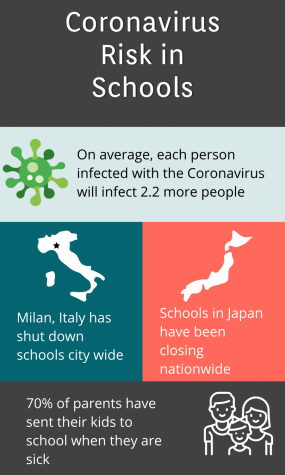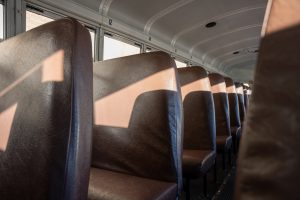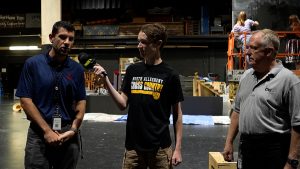Are American Schools Prepared for Coronavirus?
In the event of a viral outbreak, prepared schools may shut their doors. Nevertheless, the learning process can easily continue.
An electron microscope image of coronavirus. The coronavirus strain (nCoV) that has countries across the world on high alert had not been identified in humans before this year.
March 5, 2020
News of the coronavirus has spread quickly and has raised concern about the possibility of a global crisis. Many officials have been deciding whether or not they should close schools as a preventative health measure.
Currently, there have been 88 confirmed cases and two deaths in the US, out of a total population of 327.2 million. The groups most at risk of dying as a result of the virus are the elderly and those with preexisting conditions such as heart disease, diabetes, or respiratory issues. The risk for school-age children is much lower, which makes it much more unlikely that schools will close to reduce the risk of exposure to the virus.
Closing schools would be an effective way of preventing the spread of the virus, especially among the younger population. 70% of parents said that they have sent their child to school while sick. And that’s not including students who personally decide to attend school while sick so that they don’t miss lessons or tests.
Although the CDC website still says that “immediate health risk from COVID-19 is considered low,” the director at the CDC, Nancy Messonnier, advised parents to “ask your children’s schools about their plans for school dismissals or school closures.”
While the US has not yet made any major decisions regarding school closures, other countries have decided to take action. Beppe Sala, the mayor of Milan, closed schools in the city for a week because of the outbreak. In a more extreme case, Japan is closing schools nationwide. It is important to note that both of these countries have far more confirmed cases than in the US, 1,600+ in Italy and 900+ in Japan, making the spread of the virus a more pressing issue.
While it may sound rare, closing schools because of an illness is a fairly regular occurrence, especially during flu season. Numerous schools closed this past year just due to the seasonal flu. This practice was especially prevalent in 2009 during the H1N1, better known as the swine flu, outbreak. During this time, about 600 schools were closed in order to stop transmission among students.

According to the NCCID, closing schools helped prevent the spread of influenza, a viral strain with similar causes and symptoms as the coronavirus, but does have considerable economic downsides, especially for people living in poorer areas. One of the more influential factors to consider for the benefit of closing schools is the transmission rate of the virus. The coronavirus has a higher transmission rate than influenza. Each person with the coronavirus has been infecting 2.2 other people on average, while influenza gets passed along to an average of 1.3 people. This means that closing schools to prevent any more people from being infected should be more effective than for the regular flu.
The effectiveness of closing schools to prevent the spread of the virus also has to do with the timing. There are three different kinds of school dismissals: selective, reactive, and preemptive. Selective dismissal takes into account areas with the highest risk and only closes schools in that area. Reactive dismissals are implemented when a high percentage of students are already absent due to illness. Finally, preemptive dismissals are done before the virus has a chance to spread and is the most effective when put in place early.
A prolonged school closure would likely be more effective and less destructive now than in previous cases because of the implementation of technology in numerous schools. Teachers would be able to send out lesson plans to students through Blackboard or school emails. Closing the school would have a lessened impact on learning and students would be able to stay on track for things like the AP test in May. More importantly, it would make it safer for both students and staff should there be the risk of an outbreak.
Many schools have already practiced conducting a flexible instruction day, intended for continuous learning on snow days, which may prepare them for a prolonged school closure due to the coronavirus. Hopefully, with some foresight, the risk of the coronavirus can be minimized.














